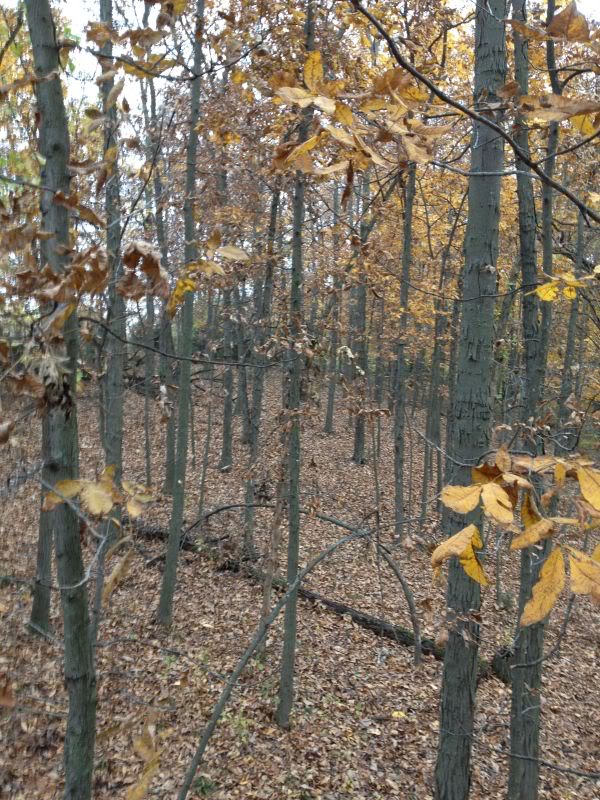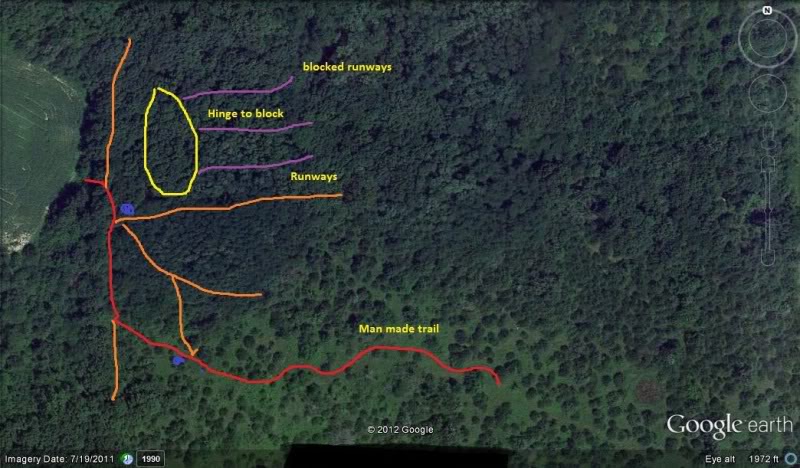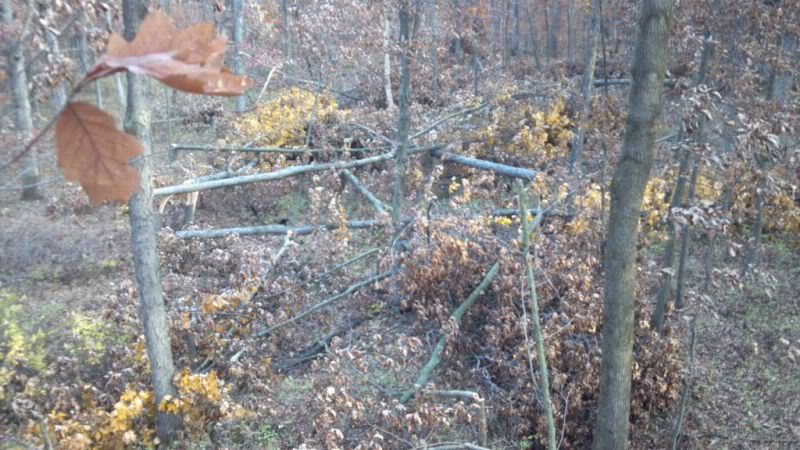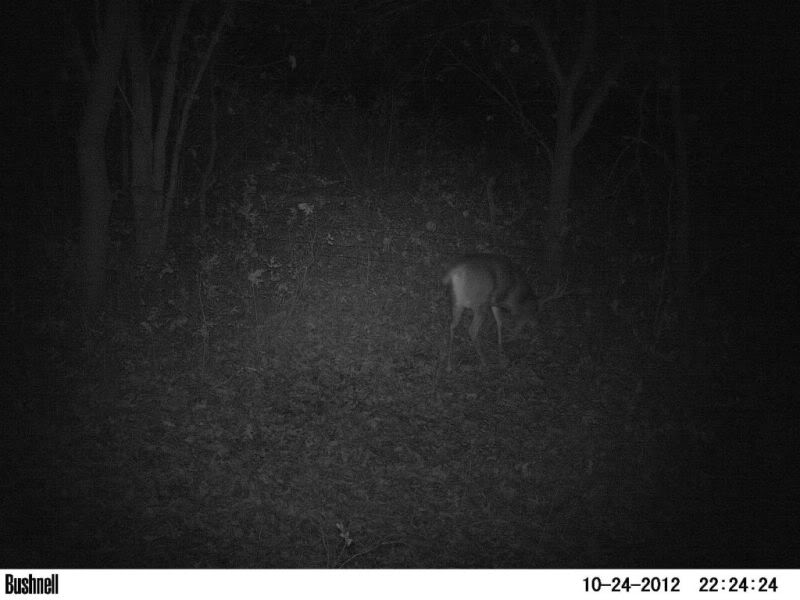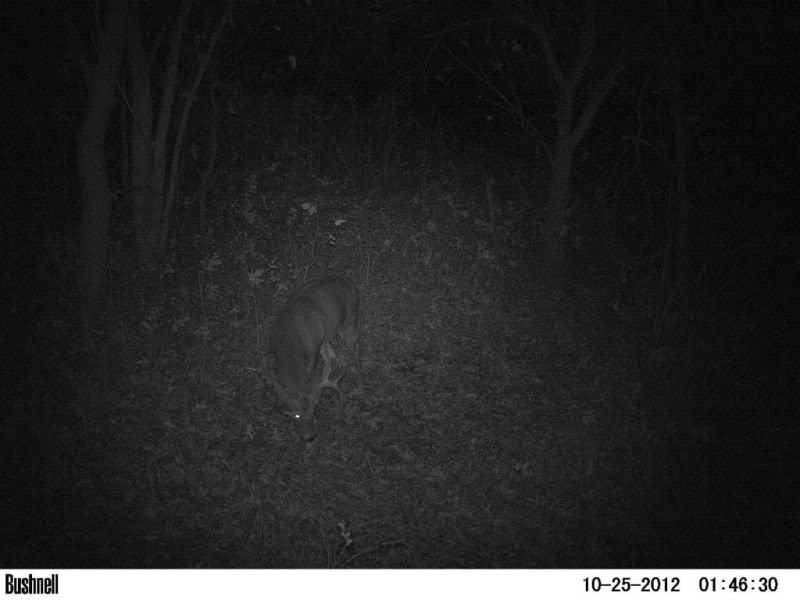dbltree
Super Moderator
September 13th, 2012
It's early fall...and everyone is proud of their food plots and eagerly anticipating the upcoming hunting season, hoping they will be successful thanks to their efforts in properly getting seed and fertilizer in the ground. Many however will be disappointed in the results simply because they have poor or no cover even though surrounded by...trees.
"Tree" do not great deer cover make, thick screening ground cover that blocks the view for more then a few yards is what makes up the kind of cover whitetails seek out yet much if not most timber I see...is wide open. This pic is a bit deceiving because of light leaf cover but I can easily see a hundred yards or more and deer avoid it like the plague!
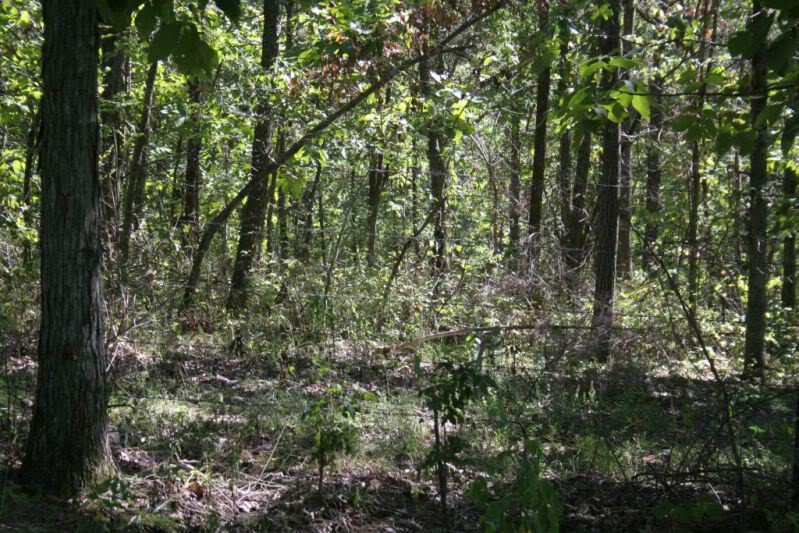
Instead they bed here...in a thick maze of downed trees and the ensuing jumble of growth that erupts immediately following radical hinging....
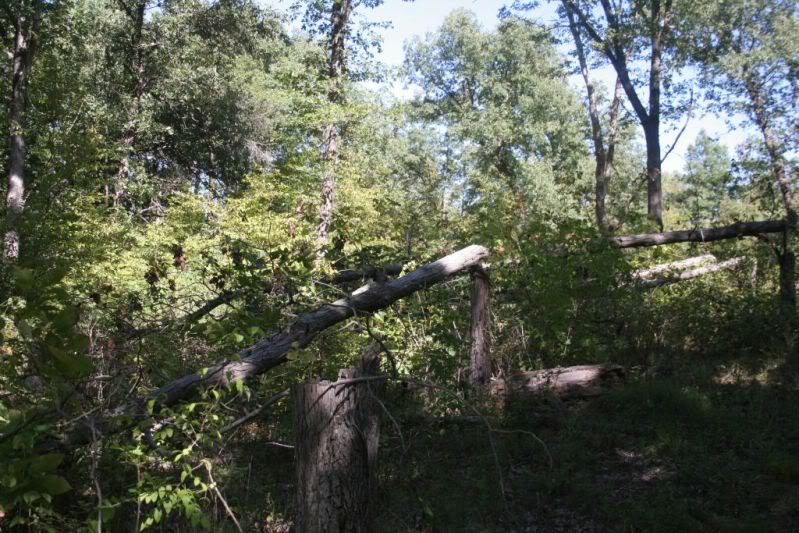
Every deer in the area beds and travels thru this safe secure timber
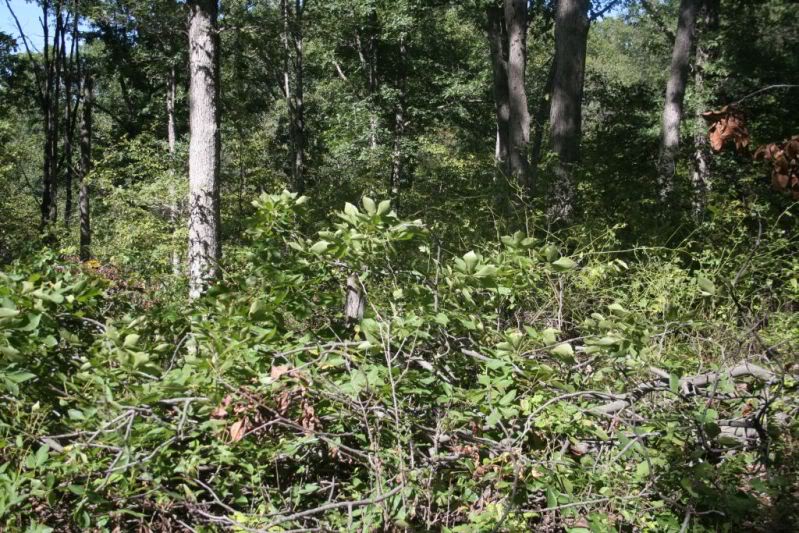
Crop trees such as this oak were released, encouraging mast production and ground cover explodes to life thanks to the increased sunlight/reduced canopy.
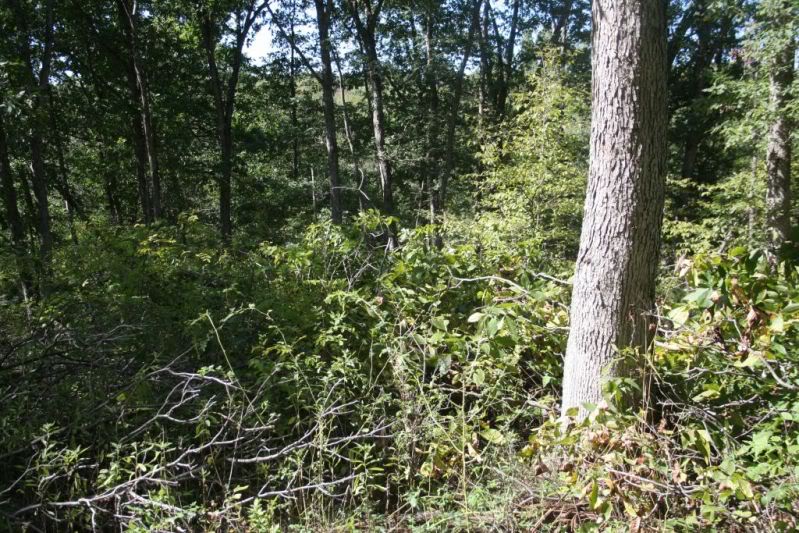
Whenever I am asked to do a consultation, landowners frequently take me first to their food plots but I tell them..."let's take a look at your timber first" and find in all but rare situations, an open park like timber with no ground cover whatsoever....and their property holds few deer because of it . Timber Stand Improvement using hinging techniques changes all of that and the results are immediate when the first hinged tree hits the dirt! The following summer changes it even more and from that point on, little used feeding areas suddenly become a place that gets grazed to the ground!
Edge feathering (tipping trees over along the field edge) is frosting on the cake, creating a wall of brush and new growth that completely blocks the timber edge from the field and creates copious amounts of browse at the same time!
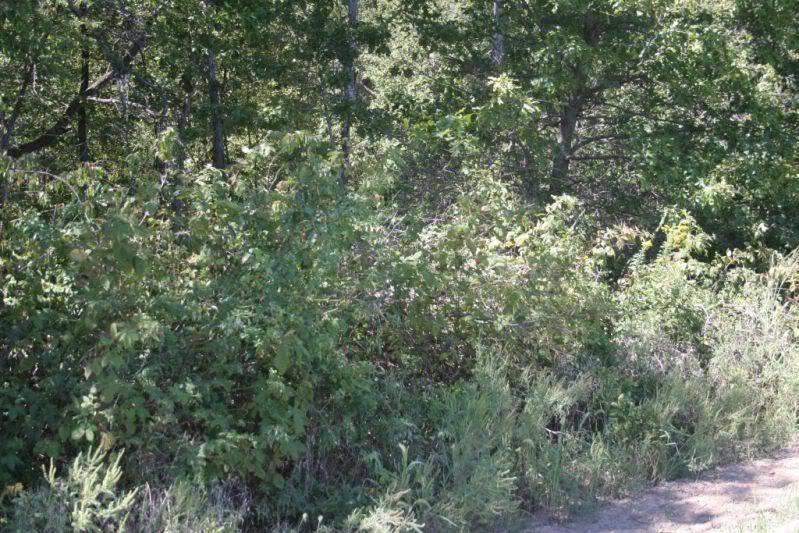
There were once 20 or more runways along the timber edge and now....every deer must travel thru this one runway creating an fantastic and highly accurate place for a cam survey not to mention a killer stand spot.
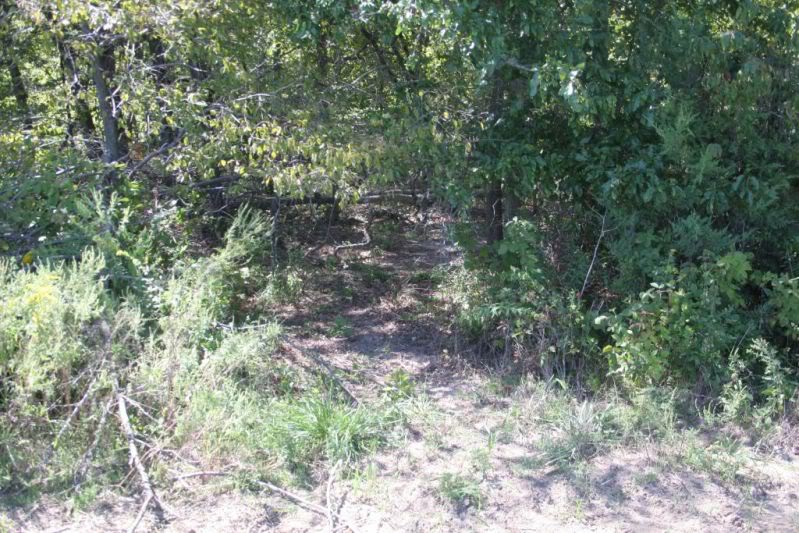
Friends...a $200 chainsaw will do more for your property then a whole fleet of tractors and implements or a mountain of seed and fertilizer! If you don't have a plot full of deer every nite...don't blame the food source....take a long hard look at your timber, because therein...lies the problem.....
It's early fall...and everyone is proud of their food plots and eagerly anticipating the upcoming hunting season, hoping they will be successful thanks to their efforts in properly getting seed and fertilizer in the ground. Many however will be disappointed in the results simply because they have poor or no cover even though surrounded by...trees.
"Tree" do not great deer cover make, thick screening ground cover that blocks the view for more then a few yards is what makes up the kind of cover whitetails seek out yet much if not most timber I see...is wide open. This pic is a bit deceiving because of light leaf cover but I can easily see a hundred yards or more and deer avoid it like the plague!

Instead they bed here...in a thick maze of downed trees and the ensuing jumble of growth that erupts immediately following radical hinging....

Every deer in the area beds and travels thru this safe secure timber

Crop trees such as this oak were released, encouraging mast production and ground cover explodes to life thanks to the increased sunlight/reduced canopy.

Whenever I am asked to do a consultation, landowners frequently take me first to their food plots but I tell them..."let's take a look at your timber first" and find in all but rare situations, an open park like timber with no ground cover whatsoever....and their property holds few deer because of it . Timber Stand Improvement using hinging techniques changes all of that and the results are immediate when the first hinged tree hits the dirt! The following summer changes it even more and from that point on, little used feeding areas suddenly become a place that gets grazed to the ground!
Edge feathering (tipping trees over along the field edge) is frosting on the cake, creating a wall of brush and new growth that completely blocks the timber edge from the field and creates copious amounts of browse at the same time!

There were once 20 or more runways along the timber edge and now....every deer must travel thru this one runway creating an fantastic and highly accurate place for a cam survey not to mention a killer stand spot.

Friends...a $200 chainsaw will do more for your property then a whole fleet of tractors and implements or a mountain of seed and fertilizer! If you don't have a plot full of deer every nite...don't blame the food source....take a long hard look at your timber, because therein...lies the problem.....



















